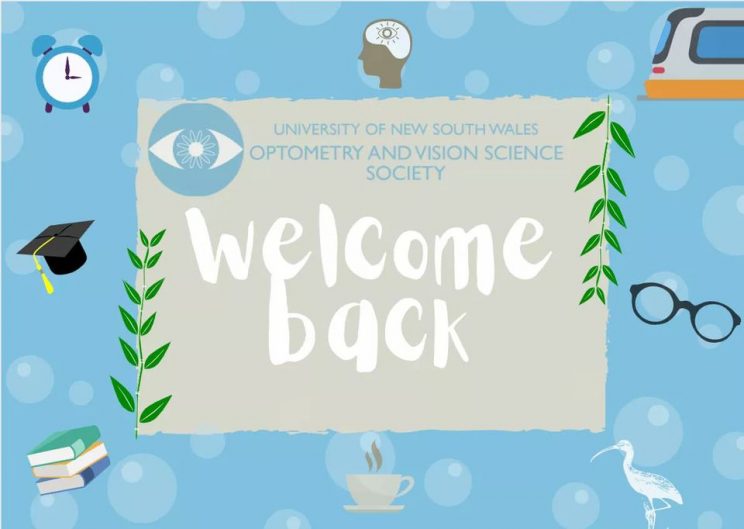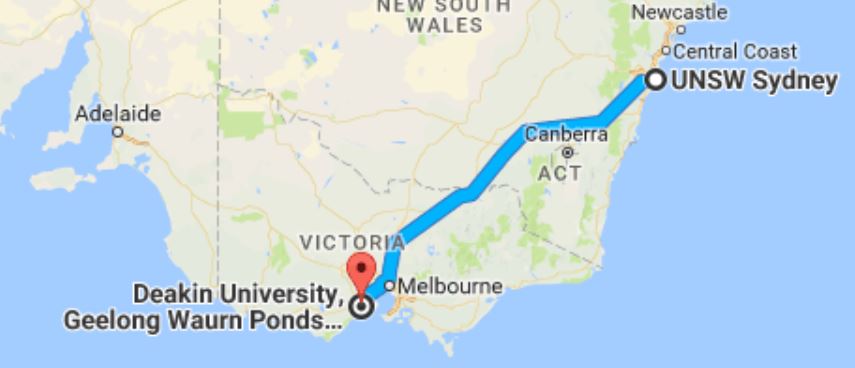Author: Lowana Littlechild (Class of 2018)
So begins another year here at UNSW Optometry and Vision Science. Congratulations to all of you! Whether you are a first-year fresh and excited to experience university, or a seasoned fourth year beginning to see patients in the clinic – studying optometry is an exciting and often challenging journey. Optometry at UNSW is unlike any other degree. Learning is not confined to lecture theatres and tutorial rooms; there are many hands-on clinical skills to learn and perfect (particularly in later years) as well as exciting opportunities to get real life experience outside of the university environment. As you progress through the degree, a number of expenses will arise as you embark on this unique learning experience.
Here at UNSW OptomSoc, we have put together a rough breakdown of the expenses you should be budgeting for each year throughout the course of the Bachelor of Vision Science/ Master’s of Clinical Optometry (and we’re not just talking about the migoreng and late night Maccas runs during STUVAC either).
Year One
You’ve probably sat through introductory lectures and browsed course outlines that talk about recommended and prescribed textbooks. There are a few things to keep in mind when purchasing textbooks in first-year optometry:
- Many of the courses have all the course content included in lecture slides and on Moodle – make sure you read carefully exactly what you need
- A number of first-year courses (particularly first semester) are a recap or an extension of Year 12 subjects you have only just done
- You can often find textbooks online as files if you know where to look (check the UNSW Optometry Class of 2021 Facebook page if you haven’t already)
- If you find a textbook you feel will assist your studies but are worried about the price, try grabbing a second hand copy through the Facebook page UNSW Textbook Exchange or the UNSW second hand bookshop for a good deal

Year Two
As you move on to more specific learning, it’s time to think a bit more carefully about textbooks. Not only are some of these super interesting, they provide fundamental knowledge for your career as optometrists on the anatomy and physiology of the eye, as well as insight into basic clinical skills and techniques.
On top of this, you get the chance to purchase your very own clinical equipment for the first time! The list for second year will include:
- Clinic kit: this is used in your dispensing practicals, ~ $80
- Direct Ophthalmoscope & Retinoscope: two pieces of clinical equipment which very handily share the same battery. The price will range from $750 – $2000
- Trial frame: these start from around $200 depending on the quality and patient comfort
If this all seems daunting, don’t worry. Manufacturers come and visit us on campus during late semester one for ‘Manufacturer’s day’. Here you will have the opportunity to try out the equipment to get a feel for what you like and talk to the experts about the specifications of each instrument before you place orders for your own (and of course get some free goodie bags along the way).

Year Three
In preparation for more practical learning and your clinical course over summer before fourth year you will be required to deck out your clinical kit with some more fundamental items:
- Clinic kits: Binocular Vision kit for use in practical lessons and later on in clinics for a range of binocular vision tests and exercises learnt in third year (~$200); Primary Care kit which contains basic supplies for consultations with patients (~$120)
- Binocular Indirect Ophthalmoscope (BIO) + Pan Retinal Lens – this is a big one, and with a student discount you’ll be looking at anything between $2000- $6000 depending on the model and manufacturer you decide to go with. This price includes a student discount with many suppliers, and keep an eye out for those who include the retinal lens you need when you use the BIO.
- Fundoscopy lens: an important lens for checking the ocular health of the posterior eye, fundoscopy lenses come in varying designs and prices range from $200-$700
Manufacturers Day will be relevant for you once again, as suppliers will come with samples of each of the different BIOs and lenses for you to get a feel of, and can answer any questions you have.

Year Four (Year 1 of the Masters of Clinical Optometry)
Now you are a fourth year, you have the exciting new challenge of working in the clinic and seeing real life patients. Clinic shirts will set you back $35/shirt – you’ll generally be in clinic two days a week in fourth year, so most people will recommend you order two shirts to start. Once you get to fifth year you might need a few more, as you’ll be in clinic 4-5 days a week.
Fourth year also brings with it the opportunity to undertake a voluntary rural preceptorship. Part of your budgeting for this will include transport, accommodation and living expenses for 2 weeks. Overall costs of the placement will vary depending on where you go; set aside ~$1000 for accommodation pp and account for flights to some locations (<$500 return).

Year Five (Year 2 of the Masters of Clinical Optometry) In your final year of optometry you will participate in a
In your final year of optometry you will participate in a 4-week preceptorship to further your skills in a unique clinical environment. There are a wide range of locations for the preceptorship, with the possibilities of travelling interstate or overseas. With this amazing opportunity comes with expenses (transport, and 4 weeks of accommodation and living expenses). Exactly how much you will need to put away all depends on how much ‘fun’ you have during your preceptorship. For some placements, it can range from $2000-10,000. Before it all feels too overwhelming, we’ll give you some promising news: OS-Help is a government based loan where you can receive up to $7000 for an overseas placement (it goes on your HECS-HELP total). Some examples of specific preceptorships and their costs are listed below:
- UK,US, Canada > $5000 to 10,000 in previous years
- China ~$4000
- Australia: cost is highly variable and can be budgeted closely by you depending on where you go. One placement run by the Brien Holden Vision Institute provides accommodation and transport.
External placements are another key (read: compulsory) part of your final year optometry experience. You will visit Melbourne and Tasmania throughout the year, so it is important to factor in transport and accommodation costs. Previous students have reported that with some shopping around on Airbnb you can be looking at around $800pp and flights ~$200-300 return for each placement, with other expenses up to how much exploring you want to do and what you’d like your final budget to be. Just remember that you might need to factor in purchasing some business attire as well, as you aren’t able to wear clinic uniform at any of these placements, which are two weeks each. Likewise, placement at the Centre for Eye Health is a six-week rotation where you’ll need business attire.

Editors: Cindy Van (Chief Editor) and Celine Zhang
Disclaimer: The views & opinions expressed in this post are those of the guest author and do not necessarily reflect the opinions & views of the UNSW OptomSoc or UNSW School of Optometry and Vision Science.





























